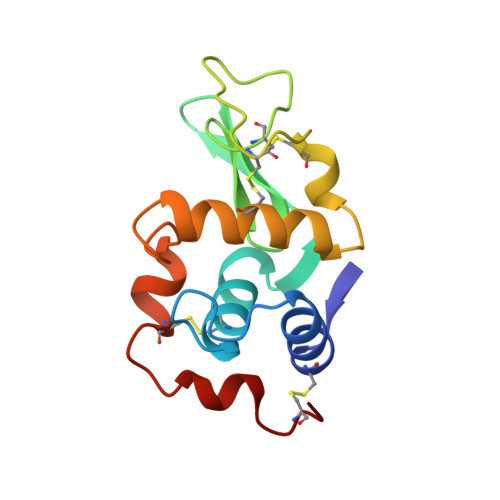Structures of orthorhombic lysozyme grown at basic pH and its low-humidity variant.
Sukumar, N., Biswal, B.K., Vijayan, M.(1999) Acta Crystallogr D Biol Crystallogr 55: 934-937
- PubMed: 10089340
- DOI: https://doi.org/10.1107/s0907444998015522
- Primary Citation of Related Structures:
1HSW, 1HSX - PubMed Abstract:
The structures of orthorhombic lysozyme grown at basic pH and its low-humidity variant have been solved and refined at 1.9 and 2.0 A resolution, respectively. A comparison of the native structure with those of crystals grown at acidic pH does not show any systematic pH-dependent difference in the molecular geometry. The conformations, mutual orientation and interactions of the catalytic residues Glu35 and Asp52 also remain unchanged. However, comparison between the native and low-humidity forms in the orthorhombic form show that the changes in molecular geometry which accompany the water-mediated transformation to the low-humidity form are more pronounced in the C-terminal residues than in the other regions of the molecule. During the transformation from the native to the low-humidity form, the locations of only about half the water molecules in the hydration shell remain unchanged, but the hydration shell as a whole moves along with the protein molecule.
Organizational Affiliation:
Molecular Biophysics Unit, Indian Institute of Science, Bangalore 560 012, India.














